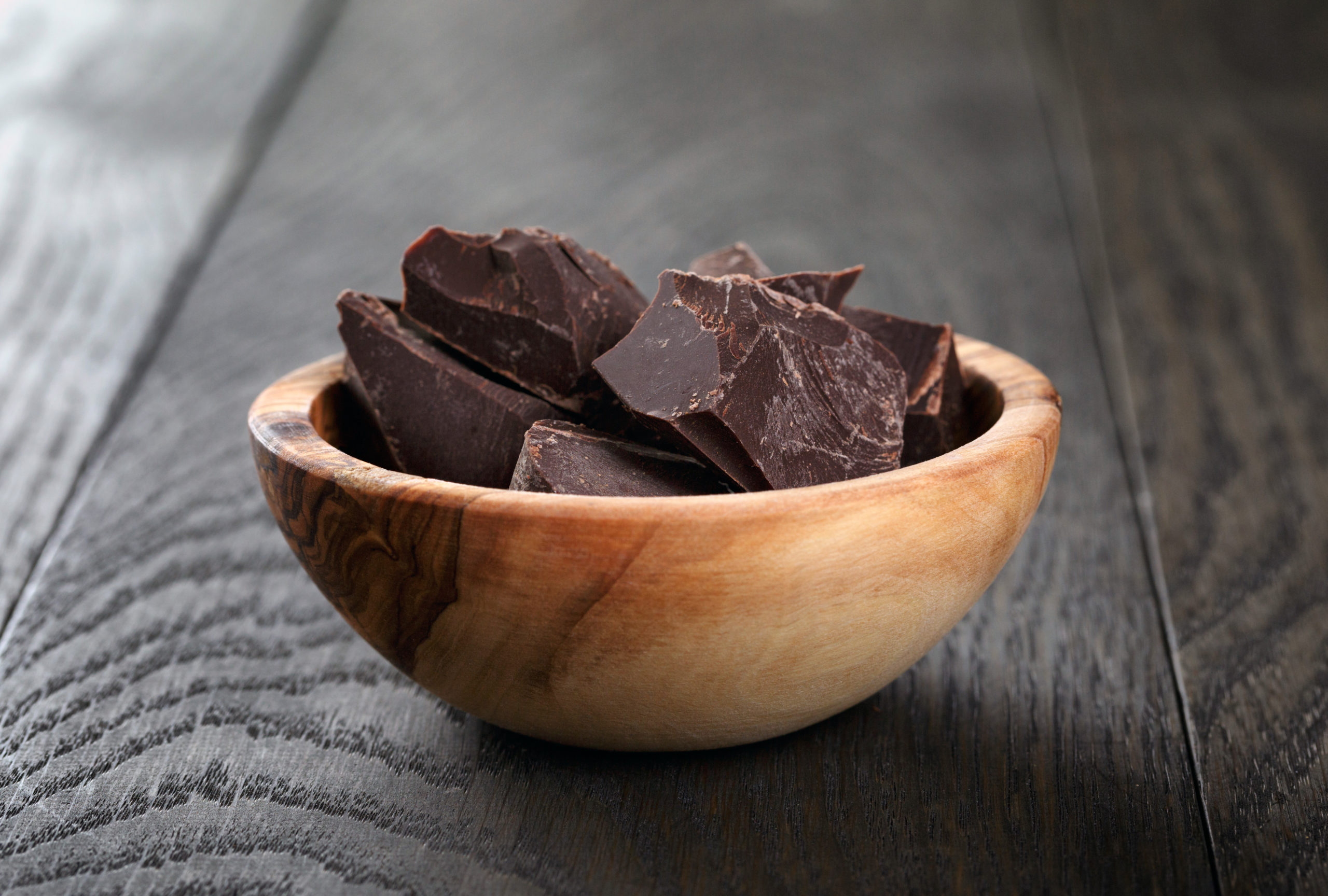Don’t get too excited. Dark chocolate contains more antioxidant-producing flavonoids than other forms, but moderation is still key.
It sounds too good to be true: Is chocolate really good for your heart?
The February 2012 issue of the American Journal of Clinical Nutrition suggested a lower rate of cardiovascular death in people consuming a diet high in flavonoids, which are phytonutrients (plant chemicals) found in almost all fruits and vegetables. In recent years, scientists have turned to flavonoids to explain some of the health benefits associated with diets rich in fruits and vegetables. Like other phytonutrients, flavonoids are powerful antioxidants with anti-inflammatory and immune system benefits. Diets rich in flavonoid-containing foods may help with lowering blood pressure, improving blood flow to the brain and heart, and making blood platelets less sticky and able to clot.
Cocoa beans, found in chocolate, are also good sources of flavonoids. So should we eat more chocolate to be our healthiest?
Unfortunately, not all chocolate retains much of the cocoa bean. If your favorite chocolate bar is white or milk chocolate, it may be a better source of calories and sugar than of heart-healthy flavonoids. Dark chocolate is typically the least processed, containing the most cocoa of all, which means it has the most antioxidant-producing flavonoids. The higher the percentage of cocoa, typically the more flavonoids the chocolate has.
But don’t get too excited. Although some chocolate contains healthy properties, you still need to be cautious and choose wisely.
Avoid picking chocolate loaded with gooey caramel, marshmallow or other additions that pack extra fat and calories. Instead, opt for a moderate-sized piece of dark chocolate — about an ounce — once in a while.
Find flavonoids in these other ways
Keep in mind that other foods, like cranberries, tomatoes, broccoli and grapes contain flavonoids, too. Enjoy these heart-smart fruits and vegetables as part of a healthy diet anytime.
“I always tell my patients bright, rich colors are best when choosing fruits and vegetables to eat every day — like kale, tomatoes, oranges, blueberries, apples and Brussel sprouts,” says Cindy Osborn, RD, LDN,CDE, Vanderbilt Heart dietitian.
Red wine also has been in the news regarding its heart-health benefits. It has been touted as helping to increase HDL, considered the “good” cholesterol. A particular flavonoid called resveratrol in red wine comes from the skin of grapes used to make wine. However, the American Heart Association and the National Heart, Lung and Blood Institute advise against taking up drinking alcohol as a way to prevent heart disease. If you already drink red wine, do so in moderation. For healthy adults, that means up to one drink a day for women, and up to two drinks a day for men. A drink of wine is defined as 5 ounces (148 mL).
The good news is that you can get your flavonoid-fill in a variety of ways.
Aim for a diet rich in lots of brightly colored fruits and vegetables. Indulge in an occasional piece of dark chocolate, and if you choose to drink red wine, do so in moderation.
Vanderbilt’s Osborne reminds us, “We can always work in a little treat once or twice a week of dark chocolate or red wine but be careful not to overindulge, as these are sources of extra fat and calories. Remember, everything in moderation.”
Stacey Kendrick, MS, is a health educator with more than 20 years of experience in wellness and population health. She spent much of her career at Vanderbilt’s Faculty/Staff Wellness Program and currently works in Strategic Marketing at Vanderbilt. She is mother to two adult daughters. In her free time, she teaches healthy cooking classes, runs, gardens and enjoys backyard bonfires.


